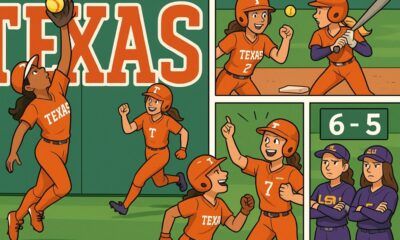
Luis Acosta/AFP via Getty Images
Carla Martinez Machain, University at Buffalo; Michael A. Allen, Boise State University, and Michael E. Flynn, Kansas State University
U.S. President-elect Donald Trump has in recent days repeatedly denounced what he sees as China’s outsized influence on the Panama Canal – the crucial maritime passageway linking the Atlantic and Pacific oceans.
On Dec. 25, 2024, Trump falsely claimed that Chinese soldiers were “operating” the Panama Canal, wishing them a “merry Christmas.”
Trump has also directly challenged the Panamanian government, arguing that the U.S. was paying too much in fees to use the canal. He added that if his demands on the management of the canal were not met, the U.S. would seek the asset to be “returned to us, in full, and without question.” He even mulled the idea of using military force to acquire the canal.
Much of what Trump says on the Panama Canal is false, as authorities in the country have been quick to note. Panamanian President José Raúl Mulino stated that there was no Chinese control or participation in managing the canal. Meanwhile, the Chinese Foreign Ministry spokesperson disputed Trump’s claims while reiterating the canal’s neutrality.
But beyond the political rhetoric, what is the state of Chinese and U.S. influence in Panama? As experts in U.S. security cooperation, we carried out fieldwork in Panama for a recent book on U.S. overseas military deployments. This included interviews in 2018 with Panamanian government officials and journalists, as well as U.S. military and diplomatic personnel stationed in Panama.
What emerged then – and is still true today, we believe – is a picture of a nation aware of the importance of its key geopolitical asset and keen to balance U.S. and Chinese interests with its own desire to run the canal without undue influence from either Washington or Beijing.
Panama Canal’s backstory
The Panama Canal serves as a crossing point for ship travel between the Atlantic and Pacific oceans without having to go around the entirety of South America.
The idea of creating a canal through Panama was first explored by Spain’s King Carlos V in 1534. Three centuries later, France began building the canal in 1881, but stopped due to its high financial and human cost.
The United States restarted the project in 1904 after supporting Panamanian independence from Colombia a year earlier as a way to secure the rights to build the canal.
The United States initially controlled not just the canal itself but also 5 miles of Panamanian territory on each side of the canal – known as the Panama Canal Zone.
The Canal Zone included a significant U.S. military presence.
Tensions over U.S. control of the Canal Zone came to a peak in 1964 when a group of Panamanian students attempted to raise the Panamanian flag at the high school inside the Canal Zone, a civilian installation that was failing to fly the Panamanian flag alongside the U.S. flag, in violation of a U.S-Panama agreement.
A confrontation with the parents of the American students turned violent, leaving several Panamanian citizens dead. The day is still commemorated in Panama as “Martyrs’ Day.”
Continued tensions and domestic protests led to negotiations between Panama, under the administration of military dictator Omar Torrijos, and the United States under the Nixon and Carter administrations. It resulted in the Torrijos-Carter Treaties of 1977, which guaranteed that the canal would remain open to ships of any and all countries, established a temporary commission to govern the canal, and secured the ultimate return of the canal to Panamanian jurisdiction on Dec. 31, 1999.
This handover took place as planned. But to this day, the U.S. remains the largest beneficiary of the shortcut, with most of the traffic through the canal coming from or going to a U.S. port.
Chinese influence in Panama
But the canal is of great importance to other countries, too, with 2.5% of global trade passing through its waters in an average year. And as China has opened up its economy in the past four decades and begun to rely more on exports, Panama has become an increasingly important nation to Beijing.
Trump’s claims that China is controlling the canal appear to be based on the fact that Chinese companies do have a stake in the waterway. Currently, the Panama Ports Company – a subsidiary of Hong Kong-based Hutchison Ports – manages the Balboa and Cristóbal ports that serve as the entry and exit ways to the canal. The company recently renewed the lease to manage these ports until 2047.
While these ports are managed by the Hong Kong firm, authority over the ports and the canal is still maintained by the Panama Canal Authority, an agency of the Panamanian government.
When conducting interviews in Panama, we asked government officials and citizens alike about Chinese influence in Panama. At the time, during the summer of 2018, much of the conversation was about China’s plans to build a new embassy overlooking the entrance to the canal. Though the U.S. eventually pressured the Panamanian government to not allow the construction, the population’s openness to China was clear.
In general, the people we spoke to said views of China were positive in Panama. Panama has a significant ethnic Chinese Panamanian population – the largest ethnic Chinese population in Central America – many of whom are descendants of Chinese immigrants who arrived in Panama in the 1800s.
Some of the Panamanian officials we spoke to said that increasing Chinese investment in Panama has increased U.S. fears about losing influence to China. However, they also viewed the U.S. as reacting negatively to increasing influence from other foreign states, too, such as Brazil or European states.
One U.S. embassy official we interviewed expressed concerns about Chinese investment, claiming it could lead to corruption and decreased economic opportunities for Panamanians.
At the same time, local officials we interviewed didn’t completely trust China either. They said that they always had concerns about major powers being honest in their dealings with Panama, whether it was the U.S. or China.
How Panamanians view the US
Both U.S. and Panamanian officials we interviewed said Panamanians generally have positive views of the U.S. A Panamanian journalist we spoke to referred to Panamanians as “gringueros” – meaning they have an affinity for Americans. While there’s still some anti-U.S. sentiment among younger and left-leaning groups, some interviewees noted that fewer and fewer Panamanians have strong memories of the U.S. controlling the Panama Canal Zone, or the 1989 U.S. invasion of Panama.
While U.S. relations with Panama are generally strong, they are not immune to challenges. One former U.S. ambassador to Panama told us that the U.S. military often didn’t take regular Panamanians’ concerns about U.S. activity seriously enough. For example, he noted that unrelated local protests can turn into anti-American protests if they coincide with U.S. military exercises.
Over the past decade, China has dramatically expanded its efforts to build influence abroad. This has involved a dramatic increase in Chinese-funded infrastructure projects and loans to governments around the globe.
U.S. officials stationed in Latin America that we interviewed expressed serious concerns regarding the growing influence of Chinese investment in the region. U.S. policy analysts have long worried about China’s development of “dual-use” projects like ports, where nominally civilian projects can be easily adapted to military purposes. At a time when, in the words of one former Panamanian government official we spoke with, the U.S. “generally neglects Latin America, and neglects the needs of Panama, specifically,” China has seized the opportunity to expand its presence in the region.
One interview we conducted was with a former president of Panama who had been involved – before he took office – in the Torrijos-Carter Treaties negotiations. He was keen to express that Panamanians placed a very high value on their sovereignty and their independent management of the canal.
This sentiment has only been strengthened by Trump’s recent comments. As Esmeralda Orobio, the niece of one of those killed in the 1964 violence, told reporters during this year’s Martyrs’ Day commemoration: “The Panama Canal is ours, and we are going to defend it.”![]()
Carla Martinez Machain, Professor of Political Science, University at Buffalo; Michael A. Allen, Professor of Political Science, Boise State University, and Michael E. Flynn, Professor of Political Science, Kansas State University
This article is republished from The Conversation under a Creative Commons license. Read the original article.

























































